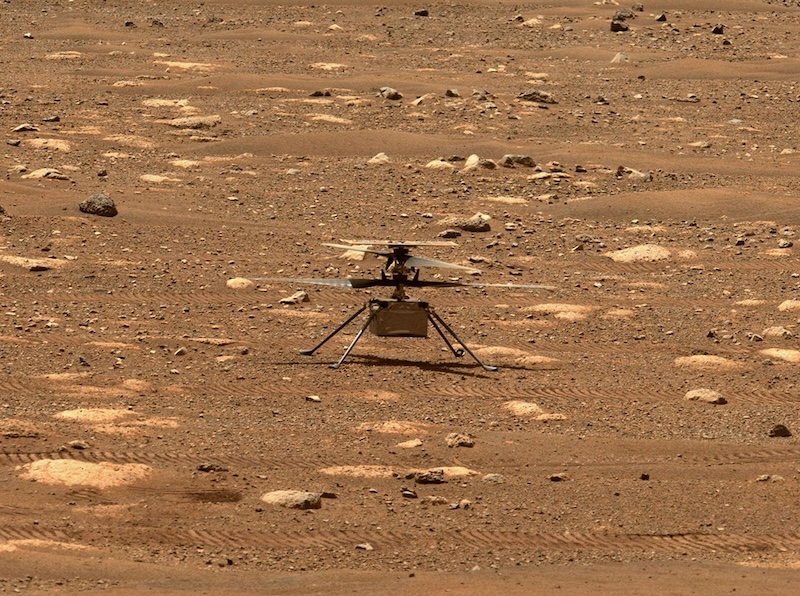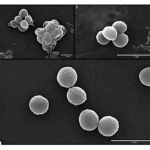Now Reading: NASA reports on Ingenuity Mars helicopter accident
-
01
NASA reports on Ingenuity Mars helicopter accident
NASA reports on Ingenuity Mars helicopter accident


- The Ingenuity Mars helicopter’s rotor blades were damaged during its 72nd flight on January 18, 2024, permanently grounding the aircraft.
- Navigation system problems caused the accident, due to the featureless terrain at a section of Jezero Crater.
- The helicopter, originally scheduled for just five flights, far exceeded expectations with 72 flights over nearly three years, serving as a scout for the Perseverance rover.
Details emerge on the Ingenuity Mars helicopter accident
The Ingenuity Mars helicopter is the first aircraft to conduct powered, controlled flight on another planet. It first took to Martian skies over Jezero Crater on April 19, 2021. And it went on to wildly exceed expectations with 71 additional flights. However, on January 18, 2024, the helicopter sustained serious damage to its rotor blades. This accident permanently grounded the helicopter. And on December 11, 2024, NASA released preliminary findings about what happened, its first aircraft accident investigation on another world. Engineers concluded that the rotor blade damage was due to a chain of events that started with problems in the navigation systems.
Håvard Grip of JPL was Ingenuity’s first pilot. He said:
When running an accident investigation from 100 million miles away, you don’t have any black boxes or eyewitnesses. While multiple scenarios are viable with the available data, we have one we believe is most likely: Lack of surface texture gave the navigation system too little information to work with.
Ingenuity’s final flight
Ingenuity’s final flight was a brief vertical ascent and descent. It was done primarily to check out the aircraft’s flight systems after an emergency landing during the previous flight. The helicopter climbed to 40 feet (12 meters), hovered for a few seconds and snapped some photos. After 19 seconds in the air, it started descending at 3.3 feet per second (1 meter/second). However, by the 32-second mark into its flight, the helicopter was back on the Martian surface but had halted all communication.
Engineers were able to reestablish communication with the helicopter a day later, on January 19, 2024. Over the following six days, they studied data from the aircraft. Images from its navigation camera showed the shadow of the rotor blades, confirming that at least one rotor blade was badly damaged. Other imaging from Perseverance later showed a rotor blade lying about 43 feet (13 meters) away.


What caused the Ingenuity Mars helicopter accident?
Ingenuity’s hard landing was due to a problem with its navigation systems. It used a camera pointed downward for tracking visual features on the surface. Software on an onboard computer analyzed these features – which changed in size and location from image to image – to measure and track the helicopter’s speed and direction. The helicopter’s navigation systems design was optimized for flat pebbly terrain, which was the case for the first five flights.
But by flight 72, the helicopter had reached a section of Jezero Crater which had steep, mostly featureless sand ripples. The helicopter’s navigation system, as a result, could not find enough features to track on the surface. The engineers said:
Photographs taken after the flight indicate the navigation errors created high horizontal velocities at touchdown. In the most likely scenario, the hard impact on the sand ripple’s slope caused Ingenuity to pitch and roll. The rapid attitude change resulted in loads on the fast-rotating rotor blades beyond their design limits, snapping all four of them off at their weakest point, about 1/3 of the way from the tip. The damaged blades caused excessive vibration in the rotor system, ripping the remainder of one blade from its root and generating an excessive power demand that resulted in loss of communications.

NASA plans to release a technical report about Ingenuity’s final flight in a few weeks.
The little Martian helicopter that could
When the Perseverance rover first landed in Mars’ Jezero Crater on February 18, 2021, Ingenuity was attached to the rover’s underside. Perseverance is still exploring the crater, beaming back a wealth of data about the red planet.
Ingenuity’s original mission was to demonstrate that it was possible to fly a remotely operated helicopter on Mars. The plan was for just five test flights over 30 days. Instead, it surpassed expectations by performing 72 flights in almost three years. In all, the helicopter accumulated over two hours of time in the air, flying 14 times farther than originally planned.
During its extended mission, Ingenuity operated as an aerial scout for the Perseverance scientists and rover drivers. Scientists had originally planned to operate the helicopter’s five initial flights during the Martian spring. But when winter set in, the aircraft’s original configuration was unable to withstand brutally cold temperatures. As a result, engineers reconfigured the helicopter to operate in winter.
Although Ingenuity is currently grounded, it continues some operations. The helicopter now transmits weekly weather data back to Perseverance. It also sends aviation electronics information, which engineers are using to design the next generation Martian aircraft.
Here are Ingenuity flight highlights in a video commemorating its 50th flight.
Future Martian aircraft
Someday, a new helicopter will hover in Martian skies. It could be the Mars Chopper rotorcraft, a new Mars helicopter currently on the drawing board. As currently designed, it is about 20 times heavier than Ingenuity and capable of transporting several pounds of equipment. It would be able to fly autonomously up to two miles per day (over 3 km). In comparison, Ingenuity’s longest distance was 2,310 feet (704 meters).
A video showing animation of the future Mars Chopper rotorcraft. This is a concept for a future aircraft that could someday access parts of Mars that are unreachable by rovers.
Bottom line: Preliminary findings from NASA indicate the Ingenuity Mars helicopter’s accident on January 18, 2024, was due to problems with its navigation systems.
The post NASA reports on Ingenuity Mars helicopter accident first appeared on EarthSky.
Stay Informed With the Latest & Most Important News
Previous Post
Next Post
-
 012024 in Review: Highlights from NASA in Silicon Valley
012024 in Review: Highlights from NASA in Silicon Valley -
 02Panasonic Leica Summilux DG 15mm f/1.7 ASPH review
02Panasonic Leica Summilux DG 15mm f/1.7 ASPH review -
 03How New NASA, India Earth Satellite NISAR Will See Earth
03How New NASA, India Earth Satellite NISAR Will See Earth -
 04And Thus Begins A New Year For Life On Earth
04And Thus Begins A New Year For Life On Earth -
 05Astronomy Activation Ambassadors: A New Era
05Astronomy Activation Ambassadors: A New Era -
06SpaceX launch surge helps set new global launch record in 2024
-
 07Space Force plans new ‘Futures Command’ amid pressure to speed up modernization
07Space Force plans new ‘Futures Command’ amid pressure to speed up modernization


















